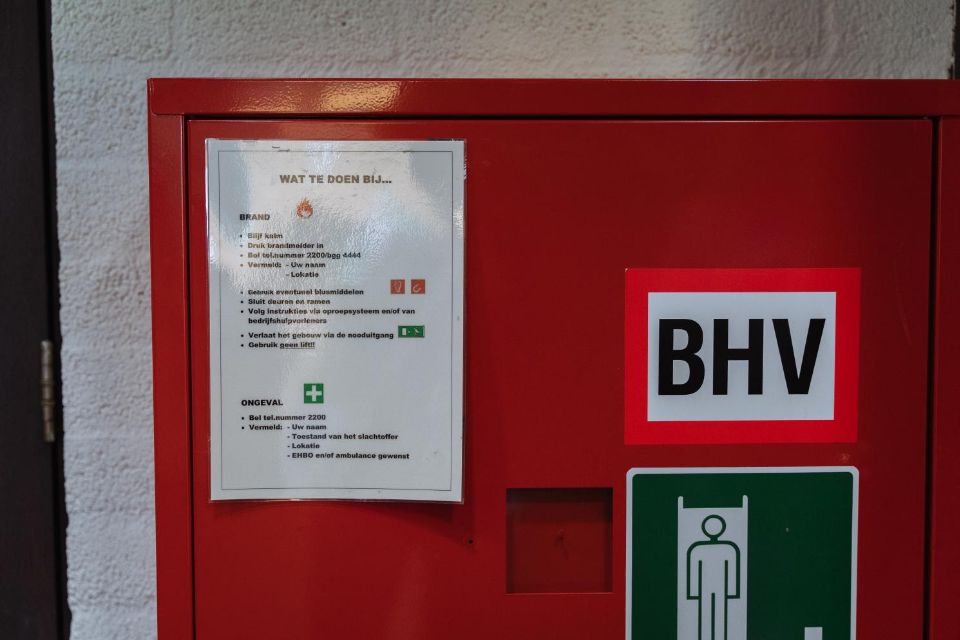The background story
A visual fire alarm hangs outside the entrance to Vrieshof. This building, which is part of the Humanities’ faculty, houses both lecture rooms and offices where employees work. It was in a building just like this one that deaf staff members could not hear the fire alarm during a fire practice.
It seems natural to be warned that there is a fire and to subsequently be evacuated. However, accounts from deaf members of staff at Leiden University prove that this is not as natural as it may seem. An article in de Mare, the university newspaper, includes the story of a deaf professor who could hear neither the alarm nor the verbal instructions given to her during an evacuation in the 1980s.
Former researcher Anique Schüller remembers that day well. She noticed her colleagues leave while she was busy working. “I thought it was someone’s birthday and that they had gone upstairs to drink coffee together”, she told me. It was not until she found a notice about a fire practice that it hit her what had happened. “I still wonder why I wasn’t warned.”
Despite this incident fortunately taking place during a practice, every fire drill ought to be treated as a real fire. Deaf and hard-of-hearing colleagues still do not feel satisfied that the danger is over. Too little has been done with their proposal for detectors with flashing lights to be installed. These alarms have only been installed on limited places outside (for example at the Vrieshof) and nowhere inside. This, of course, does not solve the problem. The university appears to have a preference for auditive warning systems. An example of this preference are the “what to do in case of…”-lists that are hung up throughout the university buildings. The section on fire includes the following message: “follow instructions via intercom and/or of the emergency responders”. It also includes a telephone number to be called if a fire were to break out. But what if telephone calls aren’t an option because your language consists of signs and you are unable to hear what you are being told?
Let’s now head to the assembly point where everyone has to gather during a fire.
